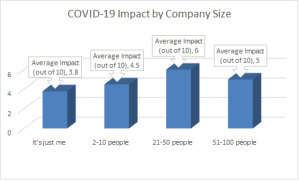
Establish clear categories to ensure you have oversight of every financial activity. This involves allocating costs across all areas of operations, including staff salaries, program delivery, facilities, supplies, technology, marketing, and other necessities. We https://www.bookstime.com/ recommend reaching out to a trained nonprofit accountant to craft your budgets from year to year. An accountant will help lead you in the right direction when it comes to discovering opportunities to cut back on various expenses and boost fundraising revenue.

Templates, Worksheets, Guides, and Sample Documents
The budget ensures you have the funding needed to execute the programs, staffing, and operations necessary to achieve each goal. Fixed expenses are those that are constant from year to year, like your organization’s office rent. You can count on this to be the same price from year to year due to the contract you have with your management company. For example, your fundraising expenses might vary depending on the campaigns you’re running. Your expected revenue should be separated and allocated by each fundraising source. Use past data from your development team to better understand and predict how much you’ll raise from each source.

Use Your Budget as a Template for Next Year
However, if you find it difficult to keep track of your organization’s finances or if you feel that a historical budget is more reflective of your organization’s needs, you may want to stick with that method. However, if you feel that it is more important to have a budget that is easier to create and that reflects past spending patterns, you may want to use a historical budget. At a minimum, you will be creating and reporting on an operating budget. This can be done by reviewing past financial performance and trends, as well as by considering any changes that may be coming up in the organization’s operations. This category includes things like educational materials, workshops, and conferences.
grant allocation mistakes and best practices for…
They can be one time, recurring, or anything in between—if it costs you, then it’s an expense! The closer to accurate you can get documenting your expenses, the easier it’ll be to stick to your budget. average nonprofit budget A capital budget covers one-time expenses that will take years to fully fund, like major construction projects. Board management software is a valuable tool in assisting nonprofits in budget planning.
Frequently Asked Questions Related to Employee Stock Ownership Plans

Finally, it is important to review the budget periodically to ensure that it remains accurate and relevant. This may involve making adjustments based on changes in the organization’s operations or financial situation. Be sure to include these expenses if the organization needs to rent or maintain a physical location for its operations. If your nonprofit can operate remotely, you may be able to save a considerable amount of money in this category. Donations, fundraising, grants—each revenue stream has its perks and quirks! Getting an idea of what these streams bring in will help you see how useful each of them are to your organization long-term.
- Generate regular reports that outline your nonprofit’s financials and the impact of your programs.
- There are advantages to preparing a separate labor budget isolated from the rest of the budget building process.
- If your nonprofit needs TV streaming, cable, or satellite service, include that here too.
- Propel Nonprofits is an intermediary organization and federally certified community development financial institution (CDFI).
- Build your budget in a zero-based manner, justifying each expense line-by-line based on organizational priorities.
- A critical component of budgeting is projecting your expected income for the upcoming period.
- Unlike the corporate world, where compensation can often be substantial and incentivized by profit margins, nonprofit salaries operate within the constraints of donor funding and mission-focused budgets.
- Similarly, the cost of fundraising is valuable to programs and the final step is to allocate fundraising expenses to each.
- Within the context of a budget, proactivity means incorporating a contingency line item.
- This helps you better understand when you have revenue coming in and expenses going out, on a monthly and yearly basis.
This information can be used to estimate income and expenses for the upcoming budget period. Reviewing the organization’s past financial performance is another important step in creating a nonprofit budget. This information can provide insights into trends in the organization’s income and expenses, which can be helpful in estimating future income and expenses. Travel may be necessary if staff members or volunteers attend conferences, meetings, or events related to your mission.
To help you get started, we’ve created a basic nonprofit budget template to track your revenue and expenses. It will work as a framework regardless of your nonprofit’s area of focus. A well-formulated nonprofit operating budget allows for the best use of limited nonprofit resources and focuses on the primary goals and objectives of the organization. In this article, we’ll discuss what is a nonprofit budget, its importance, 12 best practices, a free template, and more. Good budgeting for nonprofit organizations is critically important to success, as nonprofits typically have stretched resources, fluctuating funding, and/or heavy reliance on specific funding sources.

